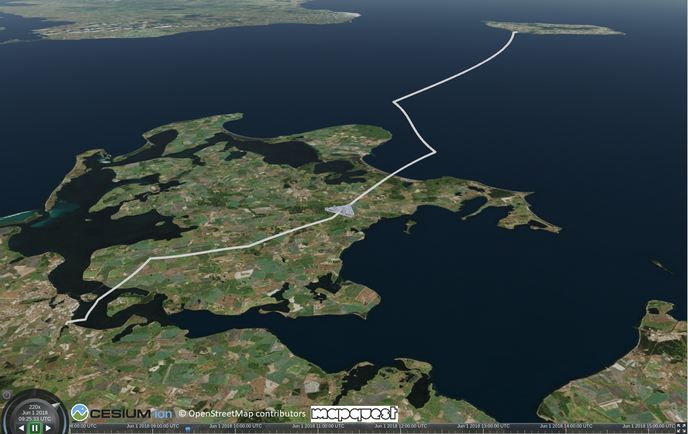Automated robots the easy way
It all started with an ambitious plan for the film and video production sector: replacing costly, heavy and labour-intensive professional motion control equipment with a novel, democratised robotic platform using a dedicated automation system. As it came up with the concept with hope for funding under phase 1 of the SME Instrument, Portuguese company Ground Drone got the attention of the EU and started working on a feasibility study. ‘Quickly, we realised that the development of solutions for video production – a market we foresaw would be showing a significant growth in the near future – was not ready for a mass-produced cameraman robot at EUR 20 000. Meeting with potential clients and partners taught us that robotic camera motion control is a niche high-end market still waiting to be disrupted,’ says project coordinator Shana Thadani. This setback, however, was beneficial for the company. They decided to refocus their work on fine-tuning MOV.AI the robot automation framework they developed, for deployment in industrial processes. With MOV.AI industry technicians can easily turn any mobile machine into an autonomous robot, saving 50 % of the time and costs usually entailed for companies hoping to commercialise Automated Guided Vehicles (AGVs). MOV.AI is based on the popular, open-source ROS which is currently supported by over 100 000 developers and researchers. It can make use of any sensor and implement any kind of robotics-related algorithms: ‘Most mobile robots have been developed using ROS, but the latter was designed as a development platform – not as a field-deployable system to be configured by non-developers. What we do is add a software layer that makes ROS features accessible to technicians in charge of configuring automation scenarios and perform maintenance,’ Thadani says. Unlike competitors who work with contractors and charge money strictly for consulting and supporting their clients, Ground Drone partners with developers, integrators and machine manufacturers who directly work with end-users. The company just takes a percentage of the expected sale price of mobile robots, a percentage that will vary depending on the agreement with each partner. ‘Our licensing fees will range from 2,000 – 5,000 Euros per robot, whilst maintenance should amount to 20% of that fee every year after this first year,’ Thadani points out. Different MOV.AI apps will be available from a dedicated app store. Of course, all developers will be able to new apps and make them available, with Ground Drone getting a fraction of their revenue. A 40-year jump for industry Although still in development, MOV.AI is already expected to be highly successful on a market where most automation is still programmed using PLCs that were invented in the 70’s, providing a way to configure the logic of sensors and actuators but not easily catering to complex changing environments or collaborative contexts involving both robots and people. ‘The new breed of agile robot arms and AGVs can be configured using ROS. By taking away the difficulty of using it, we are trying to do something similar to what Android was to Linux, in the sense that it provided a user interface that didn’t exist before, in addition to security and IP protection for third party developers,’ Thadani explains. MOV.AI has already been validated by future clients and partners who have reportedly shown great interest into acquiring the framework once it is completed. Now, Ground Drone is focusing on Phase 2 of the SME Instrument to prepare for a market launch and add new features on top of ROS. These include an HTML5 user interface, robot fleet management, an operator-user interface generator, and an app store of algorithms and workflow templates. ‘We believe that, within the next 5 years, MOV.AI will change the way mobile robots are developed. This will allow for more AGVs, collaborative robot arms and other new automation components and applications to enter the market, thus making them more affordable,’ Thadani concludes.







